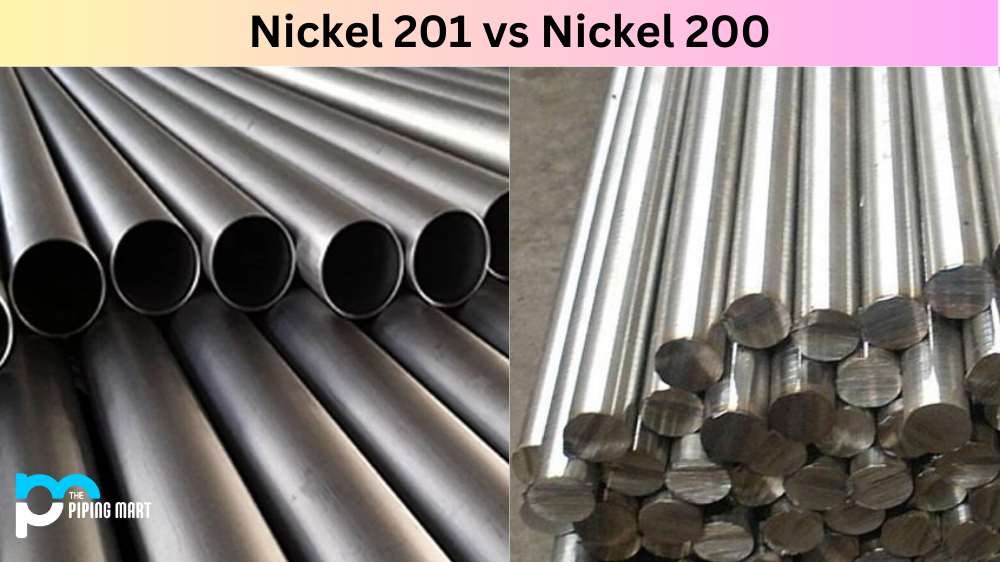Regarding high-temperature applications, nickel-based alloys are the go-to material for aerospace, chemical processing, and petrochemical industries. Among the various nickel alloys, Nickel 200 and Nickel 201 are widely used due to their excellent mechanical and chemical properties. However, these two alloys are not the same and have different compositions and applications. In this post, we will explore the differences between Nickel 201 and Nickel 200 and their respective uses in the industry.
What is Nickel 201?
Nickel 201 is a low-carbon version of commercially pure nickel. Its excellent thermal and electrical properties make it ideal for various applications, including electronics, fasteners, and valves. Its superior corrosion resistance makes it the preferred choice for long-term usage in these areas.
What is Nickel 200?
Nickel 200 is a highly corrosion-resistant, high strength and temperature-resistant alloy composed of 99.6% nickel. Used in many applications, from food processing equipment to chemical plant components, it has excellent mechanical properties at ambient and elevated temperatures, good resistance to reactive gases like chlorine and hydrogen sulfide, and outstanding formability.
Differences between Nickel 201 and Nickel 200
Composition
Nickel 200 is a pure nickel alloy with a minimum nickel content of 99.2%. It has high thermal and electrical conductivity, good ductility, and low vapour pressure. The iron and copper impurities in the alloy improve its strength and make it corrosion-resistant. Nickel 201, on the other hand, is a low-carbon version of Nickel 200. It contains a maximum of 0.02% carbon, making it more corrosion-resistant in reducing environments. Nickel 201 also has a slightly higher nickel content of 99.5%.
Physical Properties
The difference in carbon content and trace elements in these alloys leads to differences in their physical properties. Nickel 201 has a lower thermal expansion coefficient than Nickel 200, making it more dimensionally stable in high-temperature applications. However, the ultimate tensile strength of Nickel 200 is higher than that of Nickel 201, making it more suitable for high-stress applications.
Applications
Nickel 200 is widely used in applications that require good corrosion resistance, high-temperature strength, and excellent electrical conductivity. It is often used in the chemical, food, and electronic industries. Nickel 200 is also used to manufacture heating elements, heat exchangers, and decorative coatings. Nickel 201, with its higher resistance to reducing environments, is used in applications involving sulfuric acid, hydrofluoric acid, and caustic soda. It is also used in the production of sodium hydroxide and chlorine and in the nuclear industry.
Compatibility
Because Nickel 201 has lower carbon content, it is more resistant to intergranular attack at high temperatures than Nickel 200. This makes Nickel 201 a better choice for welding applications where susceptibility to stress corrosion cracking is a concern. Nickel 200, on the other hand, has better compatibility with non-nickel materials such as copper and carbon steel.
Conclusion
Nickel 201 and Nickel 200 are useful nickel-based alloys with unique properties and applications. Understanding their differences allows us to decide which alloy is best suited for specific industrial applications. Ultimately, the choice between Nickel 201 and Nickel 200 depends on the application’s particular requirements, environmental conditions, and budget restrictions.

Abhishek is a seasoned blogger and industry expert, sharing his insights and knowledge on various topics. With his research, Abhishek offers valuable insights and tips for professionals and enthusiasts. Follow him for expert advice on the latest trends and developments in the metal industry.




